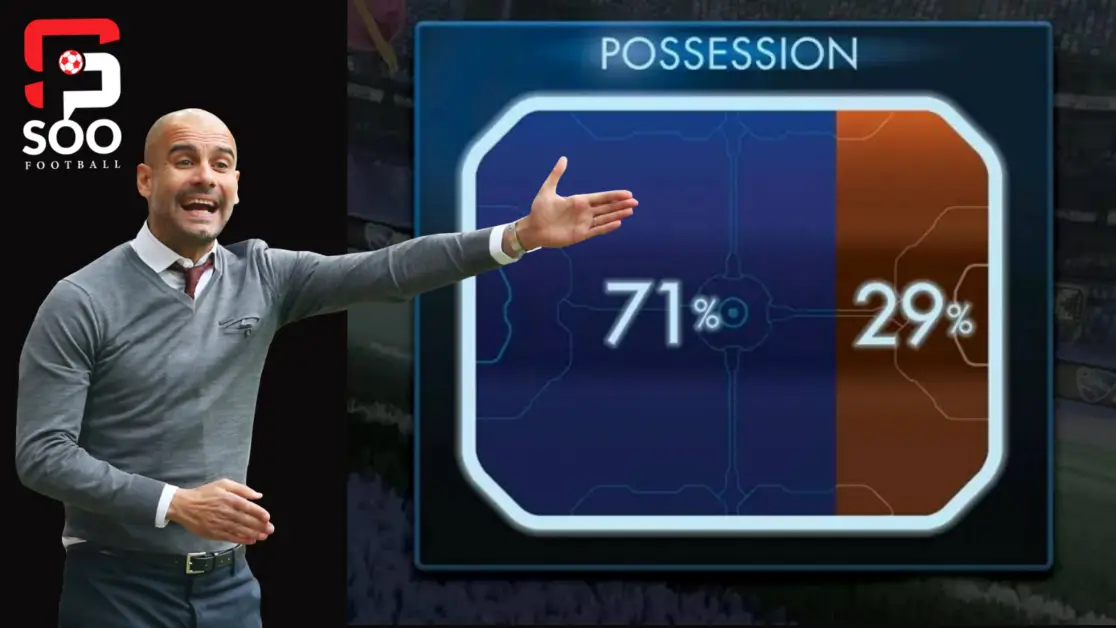Like Greek mythical creatures, ball possession has been an area where little to nothing is known. Very few football fans know the nitty-gritty that goes into calculating ball possession. Therefore, it is important to find an answer to the big question – how is possession calculated in football?
First Let us find out the meaning of Ball possession.
What Is The Meaning of Ball Possession?
To start with, what does Ball possession even mean? It indicates when a team or player is in control of the ball until the opposing team dispossesses s/he or when the ball is out of play.
Categories of Ball Possession
Ball possession can be classified into 6 major categories, namely:
- Individual Ball Possession
- Team Ball Possession
- Individual Ball Action
- Team Playmaking
- Individual Ball Control, and;
- Team Ball Control
The Unlikely Odds about Ball Possession
Generally, in football, a team with superior ball possession has always been deemed to have the highest odds of clinching the win.
However, there are major upsets inflicted on the so-called superior teams. One given example is the Celtic’s win over the overpowering, star-studded tiki-taka maestros, FC Barcelona.
Barcelona’s whopping 89% ball possession – that’s arguably the best ball possession ever recorded in the world of football, led them to amass an astounding 955 passes in that game. Celtic had just 166, and despite those odds, they slayed the giant with a 2-1 win.
So how is possession calculated in football? What are the key factors that go into calculating ball possession? What does it entail? How is it done? Is it even important to have possession of the ball?
If these are some of the questions, you’re bombarded with as a football fan, well… This article debunks ball possession calculation.
Consider Reading: Why Goalkeepers Walk Onto The Football Pitch Second After The Captain
How Is Possession Calculated In Football?
The initial calculating methods, though welcomed, offered little to no confidence in the methodology used. Why? The accuracy of the data collected was in question.
From the traditional form of calculation, two renowned entities adopted technological use to improve the accuracy of collected data from an array of metrics.
Let’s now consider the common methods used in calculating ball possession.
Read Also: The Best Football Podcasts To Listen To [Unique List]
Time Method
This form of calculation involves the manual control of a clock in intervals of possession and dispossession of a particular team. The operator’s role is to start and stop the clock concerning the team in possession.
The flaw of this method is the human factor in operating the clock when one team intercepts possession. As a human, we always get carried away when championing a particular team.
If and when a missed chance or a tackle leads to a goal, ball possession may be difficult to compute.
Read Also: A Tactical Insight Of SarriBall Vs. Tiki-taka
Furthermore, the operator may fail to switch when need is and may taint the resultant ball possession outcome.
In leagues that aren’t privileged to possess the requisite technology to compute the metric, the time method can be utilized.
Read Also: What Is Apps In Soccer Stats? 16 Other Abbreviations Explained
Number Of Passes
The commercialization of football led to a global interest in soccer stats. One key variant has always been ball possession.
You wouldn’t boldly predict a win for a team that always clocks an 11% share of total passes on an average.
As with commercial interest, there is always the desire to evolve towards a more efficient method to get stats. This has led to data collection on the number of passes a particular team attains.
The total number of passes is then divided by the total sum of the passes made in the entire match.
Read Also: Hiring and Firing Coaches in Football: The Ugly Trend That Must Stop
Actually, this method was presumed to be more accurate than the previous method. However, it didn’t factor in situations where a player was in contact with the ball, say dribbling.
This brings us to our next ball possession calculation method.
Read Also: Marcelo Bielsa’s Influence On Guardiola, Zidane & Pochettino
Contact Data
As the name suggests, the possession of a team is calculated in accordance with the number of touches or points of contact with the ball.
With the aid of video through 4k resolution cameras providing high-quality imaging, Opta, a data provider company tasked with calculating English Premier League metrics, has done away with the manual process.
In order to track the number of passes completed by each team, Opta opted to overlay the live video feeds with software.
The events logged in the system are classified with an X-Y coordinate plus a time code.
While there are flaws with this method, Opta indicates that, through their studies, they established data collected through the technological method and human intervention had the same conclusive results.
Consider Reading: How Football Contracts Work
Chess Clock
The Chess Clock method is a method used by Deltatre, a media company contracted by FIFA since 2002 to offer sports data analysis.
This method uses a timing mechanism. Armed with three buttons, two representing the playing team’s possession and the other button representing the ball when it’s out of play.
This method may also be depicted as inaccurate. Why? The data is collected manually by a human tasked with pressing the button whenever possession changes.
Read Also: The Financial Fair Play Rule Explained
However, Deltatre sort of enhances the data accuracy. To do so, Deltatre leverages optical tracking systems to acquire positional data.
Injuries, corner kicks, and match breaks are not factored in possession. But it’s keen to note that the clock is paused and continued from the earlier stopped possession time.
Then, the total time for each team is converted to a percentage.
Consider Reading: The Greatest CHAMPIONS LEAGUE Games Of All Time
Which of the Ball Possession Calculations Is Accurate?
All these methods offer varying differences, with a 4-7% disparity in data captured on the same events and in different tournaments.
Opta analysis method can be duped by teams because its main focal point is the number of completed passes a team makes. This Messi analogy completely dents the accuracy of the Opta methodology.
Also, some football enthusiasts have labelled it somewhat irrelevant to the data computation.
The ailing aspect of using the chess clock method is the manual input. This method could be erroneous by 1-3% if there’s late logged data or missed data.
However, ResearchGate’s study on individual ball possession through the use of a tracking system offers an array of hope.
This hope concerns the accuracy and different avenues on how data can be leveraged to become a pillar in the football world.
Final Thought
After reading this piece, you should have no reason to ask: how is possession calculated in football?
All the info you need is here.
In case you do not still understand, we recommend that you watch the explainer video below:
If you enjoyed this article, you also like best Football Apps, Highest goal-scoring midfielders or best Premier League center backs.
Further Reading:





